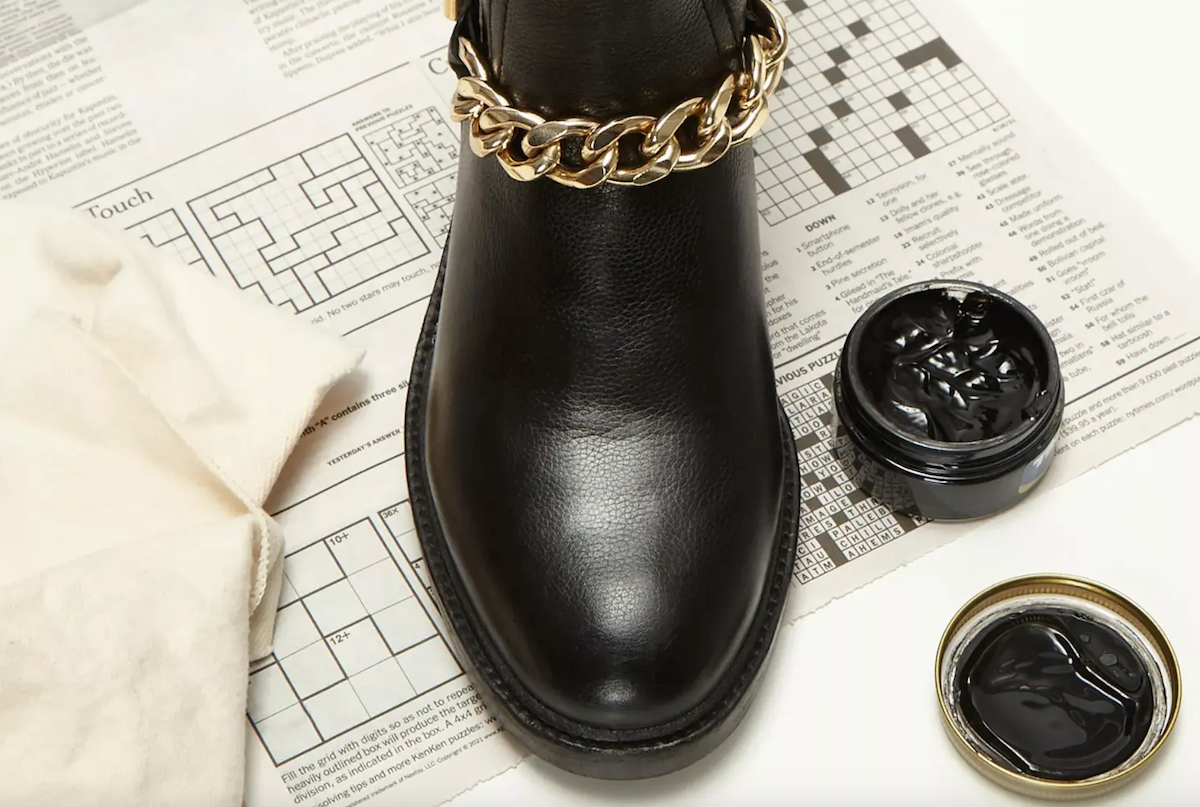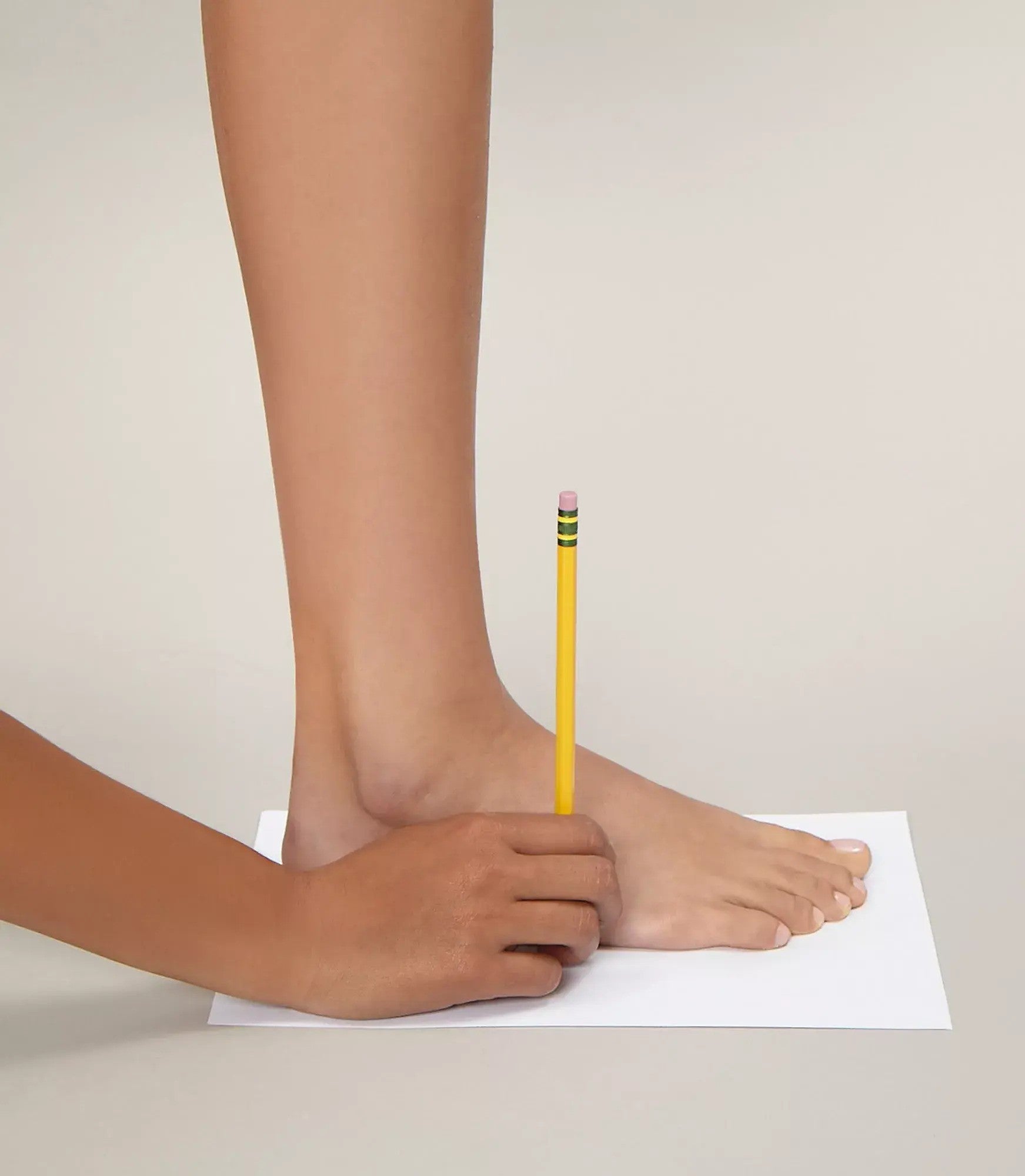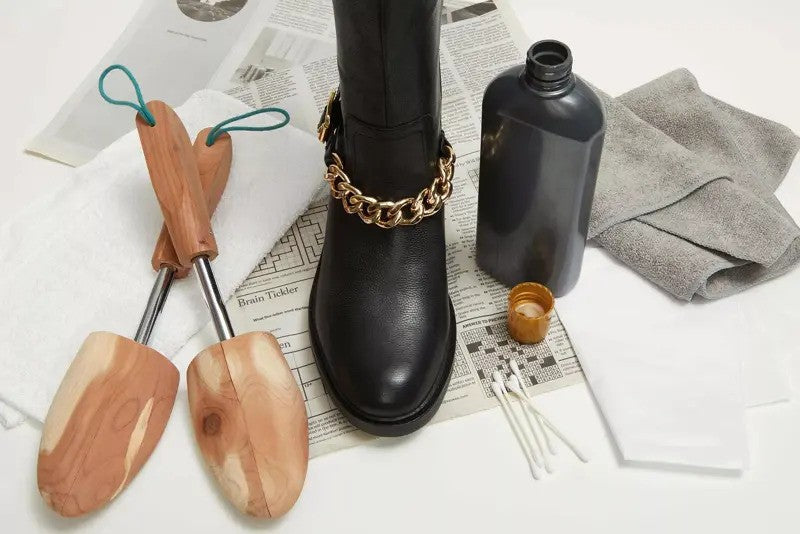Beautifully polished shoes and boots lend an elevated finishing touch to your fashion look. They also give you an instant boost of confidence and make a great first impression—whether on a job interview or a first date.
Added bonus: regular care of fine leather footwear helps extend the life of your shoes and boots, adding years of stylish service.
And caring for your shoes is fast and easy.
Shoe Care is Like Skincare
Like your own skin, fine leather is porous and breathable. “Vince Camuto shoes are crafted with premium leather,” notes Ademir Colla, Vince Camuto’s leather technician. “This fine leather needs to be gently cleaned and nourished to maintain its richness and beauty."
Additional Shoe-polishing Benefits
Polishing your shoes not only makes them look their best, but it also:
• Nourishes and replenishes shoe leather
• Protects and extends the life of your shoes
How Often Should I Clean and Polish my Shoes?
Your shoes should be cleaned and polished when the leather begins to lose its luster— which is all about how frequently you wear the shoes.
Special occasion shoes or other infrequently worn footwear may only need polishing once or twice a year.
But if you wear your shoes often, you’ll probably want to polish them every 1–2 months.
How to Shine Your Shoes like a Pro in 10 Minutes
Full shoe cleaning and polishing take less than 10 minutes once you’ve pulled together a few key products and tools.
The following step-by-step directions let you clean and polish both smooth and stamped leathers, including snake-printed and croc-embossed styles.
Note: This cream-polish-based care is NOT suitable for suede, nubuck or calf hair shoes.
Here’s what you’ll need:
- Clean, soft cloths for removing dust and dirt and applying polish.
- Cotton chamois cloth for polishing the leather
- Cotton swabs
- Black cream shoe polish for black shoes; neutral cream shoe polish for all other colors
- Shoe trees or crumpled newspaper to fill shoes
- Tissue paper or paper towel to cover embellishments like chains and buckles (optional)
- An old towel or newspaper to protect your work surface
1. Prep Your Surface and Footwear
Cover your work surface with an old towel or newspaper. If your shoes have laces, remove them. Use tissue paper or paper towel to wrap and protect any embellishment.

2. Support Shoes with Shoe Trees
Insert shoe trees or fill shoes with crumpled newspaper to support the shoe as you clean and polish it.

3. Clean Shoes
Use a clean, soft cloth to remove all surface dirt from your shoes. Be sure to remove any dirt or grit wedged between the shoe upper and sole. “Shoes need to be completely clean before cream polish is applied,” notes Colla.

4. Polish Shoes
After cleaning shoes, use a clean, soft cloth to scoop out a small amount of cream polish.

Using a circular motion, cover a small area of the shoe leather. Continue applying polish, adding more to the cloth as needed, and working gradually until the entire shoe is covered with a thin layer of cream polish.
If your shoes are detailed with chains, studs or other embellishment, use a cotton swab to apply a tiny amount of shoe polish to leather in between the details.

Avoid getting polish on embellishments which can be damaged by the cream.
5. Let Polish Soak In
Let shoes sit at least five minutes to allow the cream polish to absorb into the leather. Shoes can be set aside even longer for deeper absorption.

Some traditional shoemakers leave polish on overnight before buffing.
6. Buff Leather
Using a clean chamois cloth, gently buff your shoes, applying light pressure to bring up the shine. Be careful not to pull or apply pressure to any topstitching or hardware embellishment.

7. Store Your Freshly Polished Footwear
Leave the shoe trees or crumpled newspaper inside your shoes to maintain their shape.

Store your shoes in the sturdy Vince Camuto shoe box in which they came packaged.
Shoe Polishing Pro Tips
Always apply polish to dry shoes. Caught in a rainstorm? Be sure to completely dry—and, preferably, condition—your leather shoes before applying polish.
Keep shoes clean in between polishings. Wipe away any soil or moisture after each wear. Applying cream polish to shoes with set-in dirt and stains may result in damage and discoloration.










